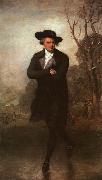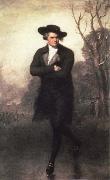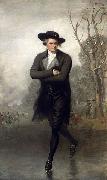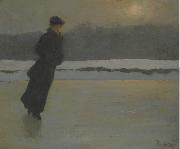Wholesale Oil Painting No Minimum |
|||||||||||
|
|
|||||||||||

|
|||||||||||
|
|
|
||||||||
Gilbert Charles Stuart1755-1828 Gilbert Charles Stuart Locations Gilbert Charles Stuart (born Stewart) (December 3, 1755 ?C July 9, 1828) was an American painter from Rhode Island. Gilbert Stuart is widely considered to be one of America's foremost portraitists. His best known work, the unfinished portrait of George Washington that is sometimes referred to as The Athenaeum, was begun in 1796 and left incomplete at the time of Stuart's death in 1828. The image of George Washington featured in the painting has appeared on the United States one-dollar bill for over one century. Throughout his career, Gilbert Stuart produced portraits of over 1,000 people, including the first six Presidents of the United States. His work can be found today at art museums across the United States and the United Kingdom, most notably the Metropolitan Museum of Art in New York City, the National Gallery of Art in Washington, D.C., the National Portrait Gallery in London, and the Museum of Fine Arts in Boston. |
||||||||
|
|
||||||||
The Skater
The Skater Painting ID:: 4524 |
1782
96 1/4" x 58"
National Gallery of Art, Washington DC
1782 96 1/4" x 58" National Gallery of Art, Washington DC |
|||||||
|
|
||||||||
Gilbert Stuart1755-1828 Gilbert Stuart was born in North Kingston, R.I., on Dec. 3, 1755. At the age of 13 or 14 he studied art with the Scottish painter Cosmo Alexander in Newport. With Alexander he made a tour of the South and a journey to Edinburgh, where Alexander died in 1772. For about a year Stuart remained, poverty-stricken, in Scotland, but finally, working as a sailor, he managed to get back to America. There he executed a few portraits in a hard limner fashion. With the Revolutionary War threatening, his family, who had Tory sympathies, fled to Nova Scotia, and Stuart sailed for London, where he remained from 1775 to 1787. For the first 4 or 5 years, Stuart served as the first assistant of American expatriate painter Benjamin West, who had rescued him from poverty. From the first, Stuart showed an interest only in portraiture and had no desire to go into the branch of history painting West practiced. After his apprenticeship, Stuart became London's leading portrait painter, next to Joshua Reynolds and Thomas Gainsborough, whose style he emulated, as in a rare full-length portrait of William Grant of Congalton as The Skater (ca. 1782). For a while Stuart lived in splendor, but being a bad businessman and a profligate spender, he was in constant debt. He lived in Ireland from 1787 to 1792 and then returned to America to make a fortune, |
||||||||
|
|
||||||||
|
|
the skater
the skater Painting ID:: 56143 |
mk247
1777,oil on canvas,96.25x58 in,245.5x147.4 cm,national gallery of art,washington,dc,usa mk247 1777,oil on canvas,96.25x58 in,245.5x147.4 cm,national gallery of art,washington,dc,usa |
||||||
|
|
||||||||
Gilbert Stuart1755-1828 Gilbert Stuart was born in North Kingston, R.I., on Dec. 3, 1755. At the age of 13 or 14 he studied art with the Scottish painter Cosmo Alexander in Newport. With Alexander he made a tour of the South and a journey to Edinburgh, where Alexander died in 1772. For about a year Stuart remained, poverty-stricken, in Scotland, but finally, working as a sailor, he managed to get back to America. There he executed a few portraits in a hard limner fashion. With the Revolutionary War threatening, his family, who had Tory sympathies, fled to Nova Scotia, and Stuart sailed for London, where he remained from 1775 to 1787. For the first 4 or 5 years, Stuart served as the first assistant of American expatriate painter Benjamin West, who had rescued him from poverty. From the first, Stuart showed an interest only in portraiture and had no desire to go into the branch of history painting West practiced. After his apprenticeship, Stuart became London's leading portrait painter, next to Joshua Reynolds and Thomas Gainsborough, whose style he emulated, as in a rare full-length portrait of William Grant of Congalton as The Skater (ca. 1782). For a while Stuart lived in splendor, but being a bad businessman and a profligate spender, he was in constant debt. He lived in Ireland from 1787 to 1792 and then returned to America to make a fortune, |
||||||||
|
|
||||||||
|
|
The Skater
The Skater Painting ID:: 83439 |
1782
oil on canvas, 245.5 x 147.4 cm (96 1/4 x 58 in.)
cyf 1782 oil on canvas, 245.5 x 147.4 cm (96 1/4 x 58 in.) cyf |
||||||
|
|
||||||||
Prince, Jean-Baptiste leFrench Painter, 1734-1781 was an important French etcher and painter. Le Prince first studied painting techniques in his native Metz. He then travelled to Paris around 1750 and became a leading student of the great painter, Francois Boucher (1703-1770). Le Prince's early paintings in both theme and style are comparable to his master's rococo techniques. In 1758 Le Prince journeyed to Russia to work for Catherine the Great at the Imperial Palace, St. Petersburg. He remained in Russia for five years and also travelled extensively throughout Finland, Lithuania and even Siberia. When Le Prince returned to Paris in December, 1763, he brought with him an extensive collection of drawings which he employed as the basis for a number of fine paintings and etchings. J. B. Le Prince was elected a full member of the Academie de peinture et de sculpture in 1765. Le Prince's graphic art of Russia and its peoples is significant in that he based his compositions entirely upon his own designs, lending a much more realistic portrayal to his views than other eighteenth century contemporaries. He is also credited with being the first artist (in 1768) to introduce aquatint into his etched and engraved plates. He may even have been the inventor of aquatint, the tonal graphic art that would later be so skillfully used by such masters as Goya, |
||||||||
|
|
||||||||
|
|
The skater
The skater Painting ID:: 97052 |
1895(1895)
Medium oil on canvas
Dimensions 51 X 61.5 cm
cyf 1895(1895) Medium oil on canvas Dimensions 51 X 61.5 cm cyf |
||||||
|
|
||||||||
|
Prince, Jean-Baptiste le French Painter, 1734-1781 was an important French etcher and painter. Le Prince first studied painting techniques in his native Metz. He then travelled to Paris around 1750 and became a leading student of the great painter, Francois Boucher (1703-1770). Le Prince's early paintings in both theme and style are comparable to his master's rococo techniques. In 1758 Le Prince journeyed to Russia to work for Catherine the Great at the Imperial Palace, St. Petersburg. He remained in Russia for five years and also travelled extensively throughout Finland, Lithuania and even Siberia. When Le Prince returned to Paris in December, 1763, he brought with him an extensive collection of drawings which he employed as the basis for a number of fine paintings and etchings. J. B. Le Prince was elected a full member of the Academie de peinture et de sculpture in 1765. Le Prince's graphic art of Russia and its peoples is significant in that he based his compositions entirely upon his own designs, lending a much more realistic portrayal to his views than other eighteenth century contemporaries. He is also credited with being the first artist (in 1768) to introduce aquatint into his etched and engraved plates. He may even have been the inventor of aquatint, the tonal graphic art that would later be so skillfully used by such masters as Goya, The skater 1895(1895) Medium oil on canvas Dimensions 51 X 61.5 cm cyf |
||||||||
|
|
||||||||
|
Prev Next
|
||||||||
|
|
||||||||
|
Related Paintings to Prince, Jean-Baptiste le :. |
||||||||
|
|
||||||||
|
CONTACT US |




